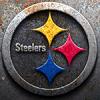Has anyone had any success using a long focal length lens (3") for engraving barrel staves in the longitudinal orientation of the stave?
OR
Has anyone devised a method to keep the lens in focus for laser engraving a wine barrel stave over a distance of more than a few inches?




 Reply With Quote
Reply With Quote
 - fiber lasers
- fiber lasers



